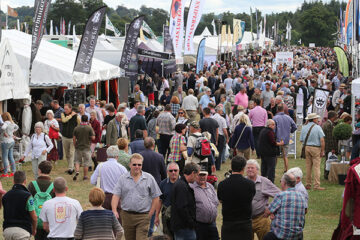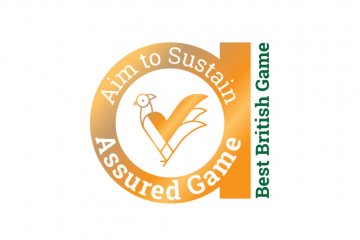And now for some good news

Every one of the partners of Aim to Sustain was heartened by the news that golden eagles are thriving in Scotland’s managed uplands. In the 7 years since the last survey there has been a 57% increase in golden eagle nests on land in Scotland managed by gamekeepers. Whilst the survey found that two nest sites used in 2015 had been abandoned, 35 new nests were discovered, bringing the 2015 total of 58 up to a whopping 91 in 2022.
In the Cairngorm National Park the number of golden eagle nests rose by 11 to 37. Whilst the Monadhliath Mountains enjoyed the largest percentage rise with 10 additional occupied nest sites. To this remarkable success story can be added the fact that within that time frame, 19 of the 23 eaglets donated to the project to re-introduce golden eagles into the moors of the Scottish Borders came from keepered moorland.
The Southern re-introduction is another good news story. With sporting estates across the Southern Uplands enthusiastically supporting the initiative and generally high survival levels amongst the released young birds, the future looks bright. Eagles take a few years before they become mature enough to breed successfully and need to find areas with abundant prey to get themselves into peak breeding condition and to have enough food to feed their offspring.
That is another reason why properly managed sporting estates are vital to the eagles long term success, as there is likely to be more suitable prey available on well keepered ground. In this context it is worth remembering that the pair of golden eagles that nested in the Lake District for several years eventually failed because there was insufficient prey for them to raise chicks consistently. When one of the adults eventually died it was suggested that a mate could be brought down from Scotland, but conservationists refused to support the idea because of the chronic shortage of prey on the unkeepered hills.
A challenge in the generally softer and less precipitous landscape of the Borders will be finding suitable nest sites, but again landowners and keepers are doing what they can to help, by building artificial nesting platforms of the type used so successfully with ospreys.
It is important that these initiatives succeed. We must not assume that all will be well. Eagle numbers on Scotland’s managed moorland may have risen faster in the last 7 years than anywhere else in Europe but we can see serious challenges ahead. The current rush to plant trees on open landscapes or allowing these landscapes to become dense scrub and self set trees as a result of abandoning management may help some species but golden eagles need open country to hunt their preferred prey, especially mountain hares. They may nest in trees but they are not woodland birds, as has been repeatedly demonstrated by their permanent disappearance as breeding species from many forested areas in Scotland.
But for the moment let us just celebrate some good news. That, like the eagles filmed for David Attenborough’s recent program, who were nesting on one, more and more of these wonderful birds are finding a safe haven on well managed sporting estates.


